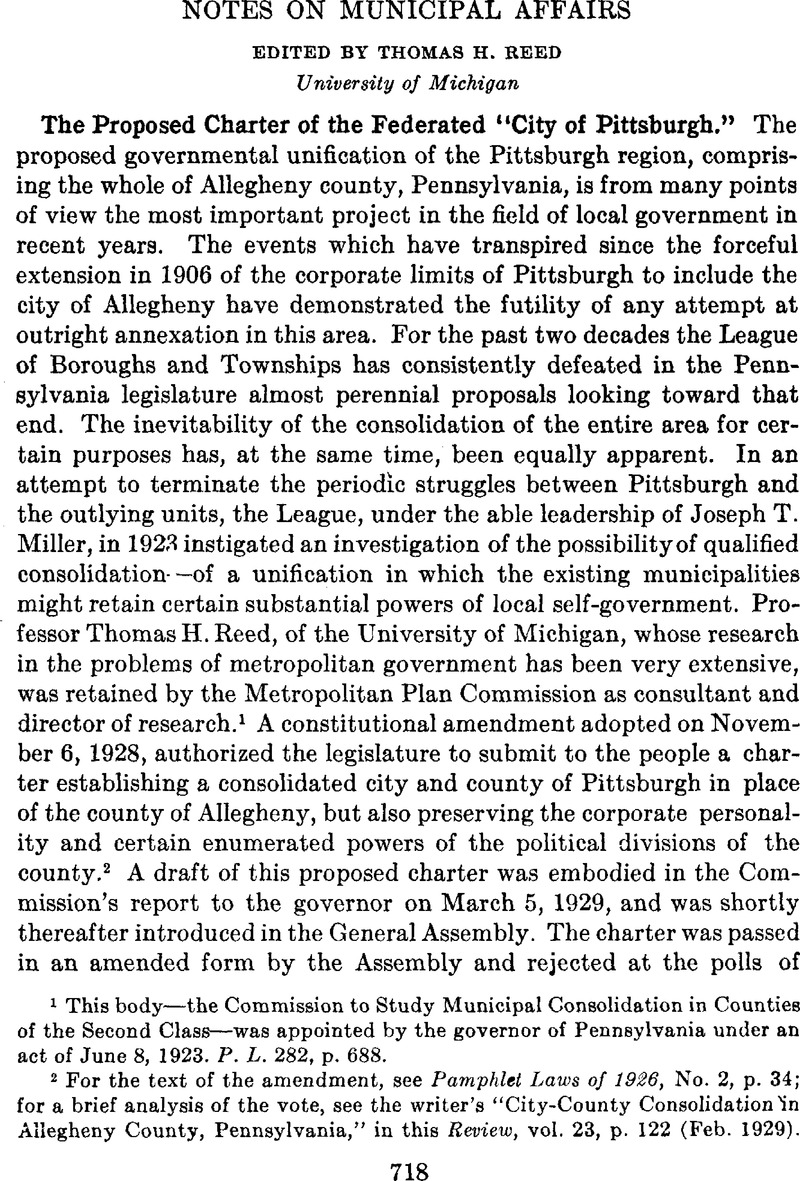No CrossRef data available.
Published online by Cambridge University Press: 01 August 2014

1 This body—the Commission to Study Municipal Consolidation in Counties of the Second Class—was appointed by the governor of Pennsylvania under an act of June 8, 1923. P. L. 282, p. 688.
2 For the text of the amendment, see Pamphlet Laws of 1926, No. 2, p. 34; for a brief analysis of the vote, see the writer's “City-County Consolidation in Allegheny County, Pennsylvania,” in this Review, vol. 23, p. 122 (Feb. 1929)Google Scholar.
3 As successor to the county of Allegheny, the consolidated city received all the property, rights, interests, claims, and causes of action now possessed by the county and the directors of the poor of the county, and all works, buildings, and property of the several cities, boroughs, and townships of the county now devoted to the care of the poor, indigent, feeble-minded, and insane. It received also such bridges and streets as might be designated by the consolidated city as through-traffic thoroughfares. It assumed the indebtedness of Allegheny county, and that of the directors of the poor of the county, as well as that of the present city of Pittsburgh incurred on account of the care of the poor, indigent, feeble-minded, and insane.
4 Under the Commission's charter, assessors were appointed from each municipal division by a board appointed by the government and the school district thereof, in accordance with the certifications of the department of personnel of the consolidated city. The assessor of the consolidated city prescribed the standards and rules of valuation, and upon the basis of the returns of these local appraisers made the assessment.
5 The charter provided that the master plan should include a major street plan, a plan for all bridges, viaducts, and overhead of underground structures, a plan for open spaces, waterways and waterfronts, and a general zoning plan, as well as a plan for the location of public property within the consolidated city.
6 The consolidated city had also the power to regulate the erection of fences, signs, billboards, buildings, and structures within three hundred feet of any through-traffic street or county road, provided, however, that in any municipal division having an inconsistent ordinance, the ordinance of the municipal division should prevail.
7 The consolidated city succeeded to all rights and obligations of the several municipal divisions under all franchises, consent ordinances, or other agreements with public utilities to the extent to which the same related to the portion of the facilities of any public utility company located in a through-traffic street.
8 For a striking commentary upon the reprehensible operation of the present system of small claims courts in Allegheny county, see Schramm, G., Piedpoudre Courts, (Pittsburgh, 1928)Google Scholar.
Comments
No Comments have been published for this article.